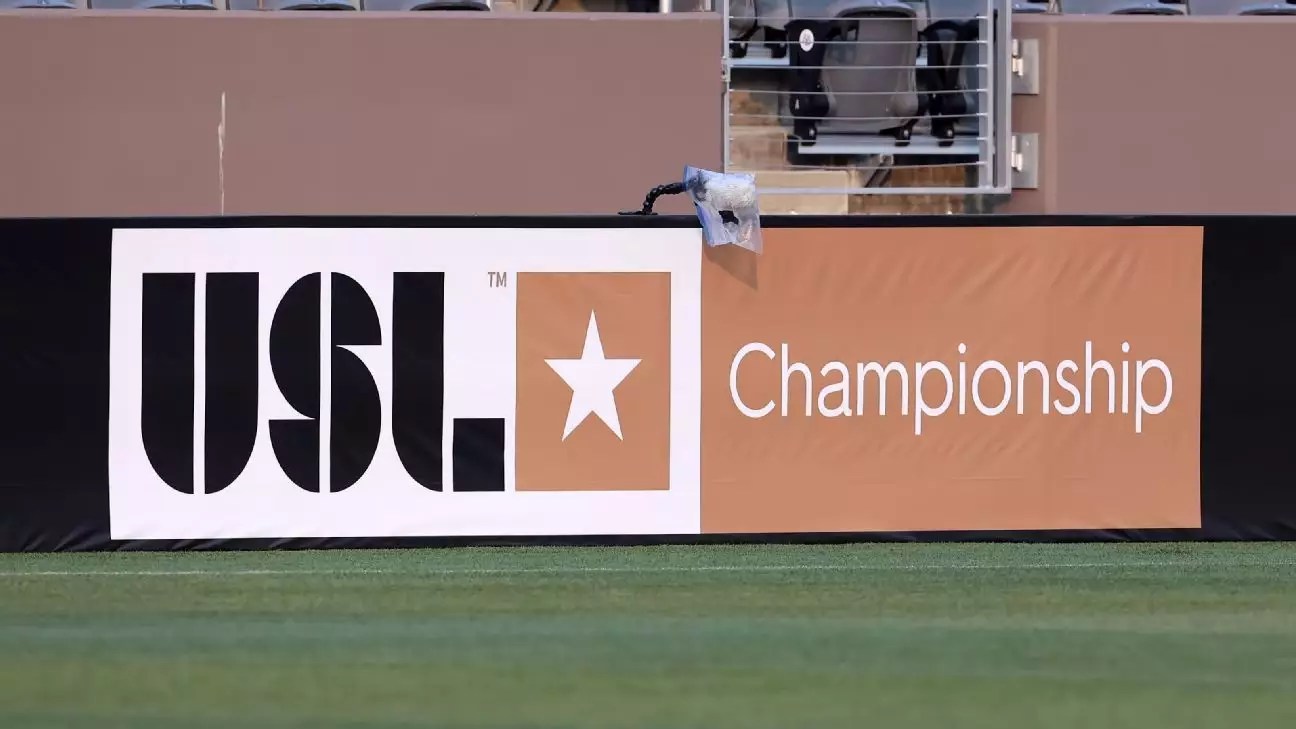The landscape of American soccer is on the verge of transformation as the United Soccer League (USL) prepares to introduce a Division One men’s professional league in 2027. This ambitious plan aims to directly challenge Major League Soccer (MLS) and is rooted in the evolving framework set by the U.S. Soccer Federation. Announced on a noteworthy Thursday, this initiative marks a critical juncture for the USL and its endeavors to enhance the soccer experience in the United States.
The Vision Behind USL’s Division One League
Alec Papadakis, CEO of the United Soccer League, articulated a vision where creating a Division One league symbolizes a significant stride toward inclusivity and accessibility in top-tier soccer. This division aims not only to provide competitive opportunities for aspiring athletes but also to bind communities through shared soccer experiences. Papadakis emphasized the ambition to amplify the sport’s presence in various cities, stating, “we’re not just growing the sport—we’re creating lasting opportunities while building a more sustainable and vibrant soccer ecosystem in the U.S.”
This perspective is refreshing, considering that the U.S. soccer model has been heavily criticized for its limited pathways for players and its reliance on a singular major league, MLS. The introduction of a Division One league opens up a new horizon, allowing for a broader spectrum of talent and competition across the country.
The USL’s new Division One league will operate independently from MLS while still adhering to the same sanctioning by U.S. Soccer as a professional league. This delineation is crucial, as it allows USL to cultivate its identity in the soccer world without being overshadowed by the commercial and cultural influence of MLS. The unique positioning of the USL could cultivate a sense of rivalry that invigorates the sport and encourages greater fan engagement, which is vital for the development of soccer culture in the U.S.
The emphasis on autonomy for clubs within the USL framework enhances the possibility of a promotion and relegation system in the future. This is a notable characteristic that MLS has chosen not to adopt. The introduction of a tiered system allows for direct competition at various levels—an aspect fans of soccer globally have come to relish. Papadakis pointed out that “the demand and infrastructure are in place,” suggesting that the soccer community in the U.S. is ready to embrace this change.
As soccer’s global footprint expands, the U.S. is increasingly becoming a focal point, especially with upcoming international events like the 2025 FIFA Club World Cup and the 2026 FIFA World Cup. The potential for American soccer is immense, fueled by both rising interests in the sport and the growth of youth programs that USL effectively aims to support. By establishing a Division One league, USL is taking proactive steps not only to enhance the local game but also to integrate into the broader narrative of global soccer.
Moreover, the introduction of a women’s pathway through the USL’s women’s leagues demonstrates a commitment to fostering talent on both fronts—men and women. The anticipated USL Super League for women indicates a recognition of the vitality of female participation in sports, aligning perfectly with contemporary societal movements toward gender equality in athletics.
The USL’s plans reflect a determined effort to reshape the future of soccer in the United States. By strategically introducing a Division One league, the organization seeks to enhance competition, deepen community ties, and create a more sustainable environment for soccer in the U.S. The impending launch in 2027 not only signifies growth potential but also a readiness to elevate the standard of the game of soccer across various levels.
This transition could indeed catalyze what has long been an underdeveloped part of American sports culture. As the soccer community eagerly awaits the developments from the USL, one thing is certain: the future of American soccer is poised for an exciting evolution.


Leave a Reply